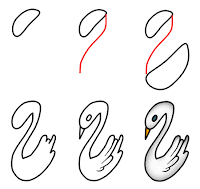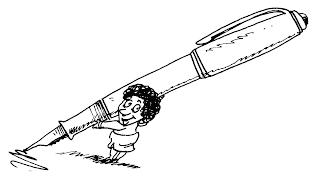
Adults or students who need to read a lot, feel the pressure of time. Reading faster may be a solution to the problem,
but how speed reading techniques help us achieving more within short time?
According to Wikipedia:
"Speed reading is a collection of reading methods which attempt to increase rates of reading without greatly reducing comprehension or retention.
It is important to understand that no absolute distinct "normal" and "speed-reading" types of reading exist in practice, since all readers use some of the techniques used in speed reading (such as identifying words without focusing on each letter, not sounding out all words, not sub-vocalizing some phrases, or spending less time on some phrases than others, and skimming small sections). Speed reading is characterized by an analysis of trade-offs between measures of speed and comprehension, recognizing that different types of reading call for different speed and comprehension rates, and that those rates may be improved with practice.
Speed Reading expert Don Wetmore says:
The average person spends about two hours per day reading at the rate of about 200 words per minute. If you can double your reading speed, you can cut your reading time in half. What takes two hours can now be done in one hour. An extra hour a day for you. Seven hours per week and 365 hours for you over the next year. That’s the equivalent of nine additional workweeks over the next year to spend time with your family or hobbies or work on those important tasks that are being neglected."Full article link:
speed readingI have searched for sites which provide FREE tips, techniques to learn speed reading, and present it for students, teachers and parents who want to read more at speed and learn more.
Links and sites providing tips, technique for speed reading!*
Read fast now provides many articles on reading, teaching someone to read and speed reading methods.
-In one of the articles "
Reading Fast – Why You Might Want to Think About Speed Reading" it says:"
Your Comprehension and Retention Will ImproveOne of the main reasons you’ll want to think about learning how to speed read is because your ability to comprehend and retain the material you read will be increased when you know how to speed read. Speed reading is far more than just learning how to read fast, but it is a technique that helps you learn to pull out the important information as you read and how to retain it as well. So, instead of reading through some information only to realize you don’t remember a word you read, speed reading can help you comprehend what you read and retain it for future use.
You’ll Save TimeAnother benefit of speed reading that definitely makes it worth your time to learn is that it can really save you a huge amount of time. You can read a book or other document in just half the time you used to if you learn how to speed read. Speed reading allows you to ready quickly and to just skim the material in order to get the information that you need from the material. So, whether you are reading material for work, school, or for pleasure, you’ll be able to do it in just a fraction of the time it used to take you.
Reading Will Become EnjoyablePeople who learn how to speed read also find that they start to enjoy reading. For many people, reading is a task that is less than exciting to them because it takes them so much time. However, when they learn how to speed read, instead of feeling that reading is boring and time consuming, they begin to find that it is enjoyable and interesting. Not only will you find that you enjoy having the opportunity to read, but you will also find that you increase and develop your intellectual skills as well.
Grades Can Be ImprovedIf you happen to be in high school or even in college, you can also benefit from learning how to speed read. Many students feel overwhelmed with the amount of information they are required to read, absorb, and learn; however, speed reading can definitely help. There have been many students who have been able to increase their comprehension and therefore their grades by learning how to speed read. So, if you want to improve what you gain from your education and also your grades, speed reading is a great skill to take advantage of.
Increased VocabularyLearning how to speed read can also help you to increase your vocabulary as well. As you become a better and faster reader, you will learn more words and build up the vocabulary that you have. You will not only increase your vocabulary, but you will also enrich your knowledge as well. So, speed reading is a great way to improve and enhance your knowledge and education as a person.
So, as you can see, there are many great reasons that learning how to speed read is an excellent choice. With all of these excellent benefits presented to you, no doubt you can see why it is so important to take a course in speed reading on your own. There are many excellent speed reading courses available to you today, some free and some you may have to pay for. Taking the time to learn the art of speed reading will benefit you in your personal life, in your life at work, and it can also help you as you pursue a higher education as well."
*
dictator is a program for on-screen reading of text files, developed with the intention of making it easier to read some of the fine electronic texts available on the net.
The problem with these texts is that reading them on-screen the conventional way is a drag and printing them out is time-consuming, costly, and wasteful. Dictator provides an alternative approach called Rapid Serial Visual Presentation (RSVP) in which words are displayed consecutively in the same place at a user-controllable rate. This method prevents unconscious re-reading of adjacent text and decreases the tendency of the reader to oralise the text, allowing for increased reading speeds. RSVP also permits the use of larger fonts for text display which improves text clarity. While it does take some getting used to, with a little practise you may find that reading with Dictator becomes faster and easier than reading from a book.
Double Your Reading Rate is from "Scott H Young" blog. He himself tried the speed reading methods and now he is a faster reader. He says that he could read at 450 words per minute before using the techniques, but he could increase that rate to around 900 words per minute.
He suggests six major keys to improve reading skill, which are:
1- Reading is Not Linear: You can skip down to read only my main bullet points, or read them in practically any order.
2- Stop Subvocalizing: Subvocalizing is the saying of words aloud or in your mind. It slows down your reading speed.
3- Practice Reading: Practice reading means reading faster than you can actually read.
4- Use a Pointer: You should use your finger as a pointer. By moving your finger faster than you can actually read, your eyes get used to viewing text faster than your brain can process what is written down
5- Eliminate Distractions: Avoid internal or external distrations.
6- Find Your Motivation: If you can connect what you are reading to a deeply held motivation, and determine your specific purpose for reading you can maintain a very alert and focused state.
Full article link:
Double Your Reading Rate*
Speed Reading and Speed Listening at "Getting things done" blog. It also suggests 6 tips which are:
1- Take a few minutes to “get to know” the book
2- Decide which parts of the book you are going to read
3- Sit up straight in a suitable environment
4- Keep moving your eyes no matter what!
5- Don’t mutter under your breath or in your mind
6- Stay focused and monitor your comprehension
Full article link:
Speed Reading and Speed Listening*
4 tips for reading better and retaining more at "Gear fire which provides tips for academic success.
* An article at "Study skills" blog:
4 tips - Catch up with speed readers*
How to Learn Speed Reading at "WikiHow"
*
Improving Reading speeds at "Speed readin.com
-
Speed Reading - Learn to Read Faster at the same site.
 Most of the children are comfortable with circle which is very easy to draw. I first ask them to draw a circle, then add more circles or few strokes and then ask what is this object? Usually kids are very excited to see transformation of simple circle into cat, flower, clock etc.
Most of the children are comfortable with circle which is very easy to draw. I first ask them to draw a circle, then add more circles or few strokes and then ask what is this object? Usually kids are very excited to see transformation of simple circle into cat, flower, clock etc.

